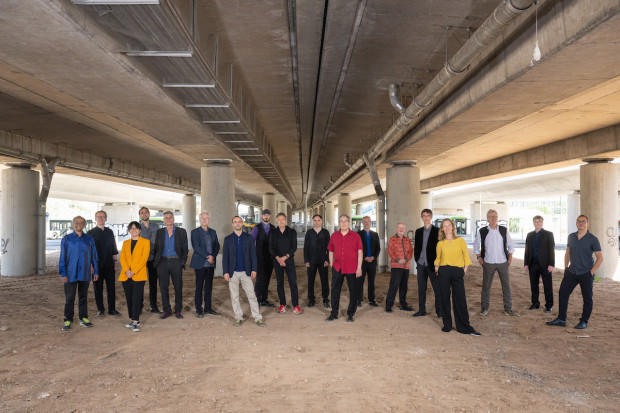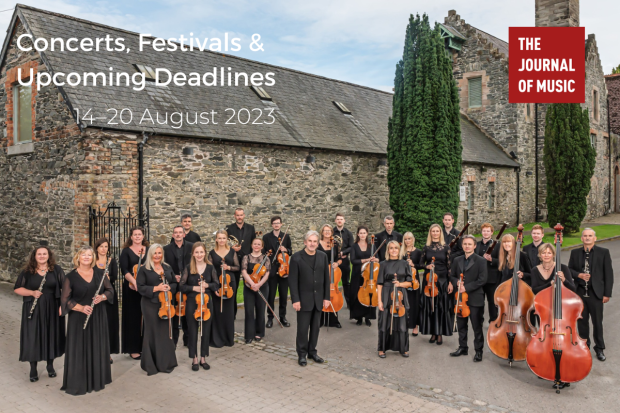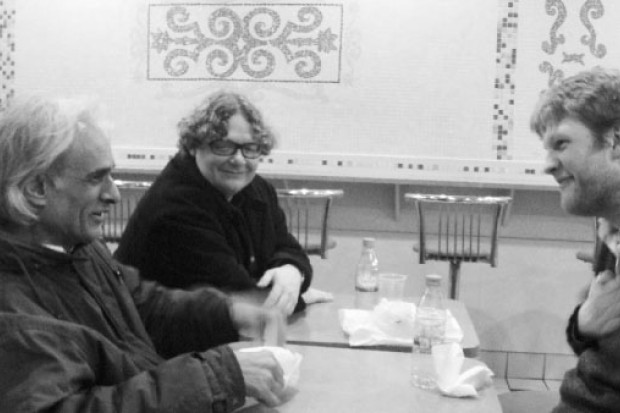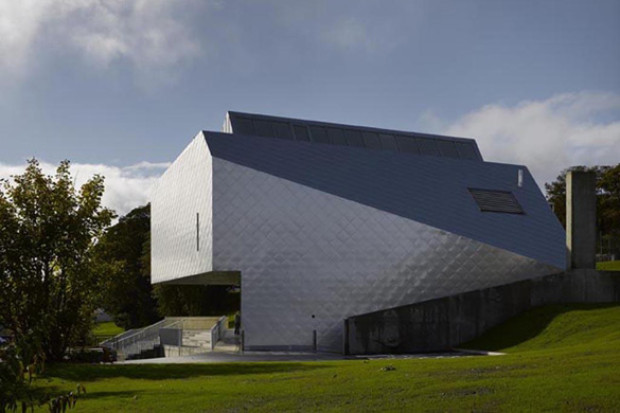
A section from the cover art by Craig Carry for Linda Buckley's 'From Ocean's Floor' .
Ethereal and Melancholic
This release from NMC, devoted to the music of the Irish composer Linda Buckley, features six works composed inside of the last decade, each featuring an electronic component – something that is a regular feature of her work.
As quoted by Christopher Fox in the album’s liner notes, the late musicologist and writer Bob Gilmore used the word ‘ecstasy’ to describe the quality of Buckley’s music. For Gilmore this ecstatic character constituted ‘an emotional response to the world that sees the bright places of life as clearly as the dark.’ Traditionally, most composers have reserved this quality for certain moments in a piece which are arrived at after a sense of struggle. What characterises much music of younger Irish composers – particularly those associated with the New Sincerity style such as Seán Clancy and Garrett Sholdice – is that the music attempts to stay in this zone and extend the feeling of transcendence over a longer period of time. In Buckley’s case, this quality is allied with a very direct emotional expression that is both melancholic, reflective and quite individual.
This is very much apparent from the opening work on the album – the song cycle Ó Íochtar Mara (2015), for sean-nós singer, string quartet and electronics – performed here by Iarla Ó Lionáird and members from the Crash Ensemble. In the first song I Fil Duine (Gráinne speaks of Diarmuit) an initial drone thickens into an electronic halo forming a background for simple melodic lines from each member of the quartet to weave together, occasionally clashing to form gently dissonant harmonies. Of the three elements fused here – folk, classical and electronic – the most striking is Buckley’s electronics which at first can sound slightly dated, but which gradually accumulate a style all of their own, such as the opening drone of the third song Gealach agus Grian (Sun and Moon) (apparently derived from a milking machine on the Buckley family farm) or the more ghostly sounds in the fourth song Áimhréidh (Entanglement).
A certain ethereal quality is present in every track on the album. Named after the Icelandic word for ‘peace’, Fridur for piano (Isabelle O’Connell) and electronics (Buckley) will recall to listeners some of the epic soundworlds of the Icelandic post-rock band Sigur Rós. The piece opens with a series of bare chords in the middle and upper registers of the piano while drifting electric sounds based on the resonance of the instrument advance and recede. The chords eventually develop a pulse, setting off more decisive rhythmic patterns before a tremolo figure takes over and develops into a clangorous ending when the tremolos reach the lower register of the piano. The sheer breadth of the transition from the opening to the conclusion feels like watching a northern landscape gradually changing under the influence of nature.
For me, the standout piece on the album is Discordia, a work composed for the percussionist Joby Burgess that features the canna sonora, a harp-like instrument that is played by rubbing aluminium rods with rosin-coated gloves. It shares a similar range to Fridur, but investigates a much more industrial soundscape beginning with the high-pitched sonorities of the canna sonora which create an otherworldly glistening sound that remains present on top of the texture throughout the piece. A pulsing ascending riff enters followed by a much more distorted, lower pitched one which builds up into a fascinating mass of industrial-sounding noise.
If there is one slightly frustrating thing about the music’s ecstatic nature, it is that while it does build into moments of intensity, it never boils over into frenzy or anything cathartic. The music always seems to step back from the breach, and even the most intense sections of Discordia and Fridur either dissipate into silence, or simply wind down. This is not so much of a problem in these two works, as the transition from one state to another occurs gradually, but it is more problematic in other works which attempt to mount a more deliberate climax; the impact is hampered by a slightly ponderous lead up to this point. For example, in the first song of Ó Íochtar Mara there are two climaxes for Ó Lionáird – one in the middle and again at the end – but they are both approached by a vocal line which simply inches upwards predictably in step. In Haza (featuring the ConTempo Quartet and Buckley on electronics), the same thing happens in two passages near the end when a rising figure with overlapping minor second dissonances (again ascending up a scale) tries to build up to a climactic moment. In both cases, the approach is too ponderous and drawn-out, severely depleting any sense of arrival or release.
Another thing to note is that, as well produced as this CD is, to hear this music live is quite a different experience. For instance I recall hearing Kyrie, which features Buckley’s own voice with electronics, in a live concert with eight spatially separated speakers and being mesmerised by the richness of the sound. On the album, however, it actually struck me as being one of the weaker works, and the complexity of the sonic texture that made the piece stand out in that concert did not transfer onto the recording. This problem is a familiar one to fans of electronic music and it simply means that if you like the works on the CD, they will sound substantially more impressive in a live setting.
Overall, this album offers an excellent portrait of one of Ireland’s most interesting composers and will appeal to a range of tastes far beyond the contemporary music scene.
From Ocean’s Floor by Linda Buckley is available on CD and online from NMC on Friday 25 September 2020. To purchase the recording, visit www.nmcrec.co.uk/recording/oceans-floor
Published on 24 September 2020
Adrian Smith is Lecturer in Musicology at TU Dublin Conservatoire.















